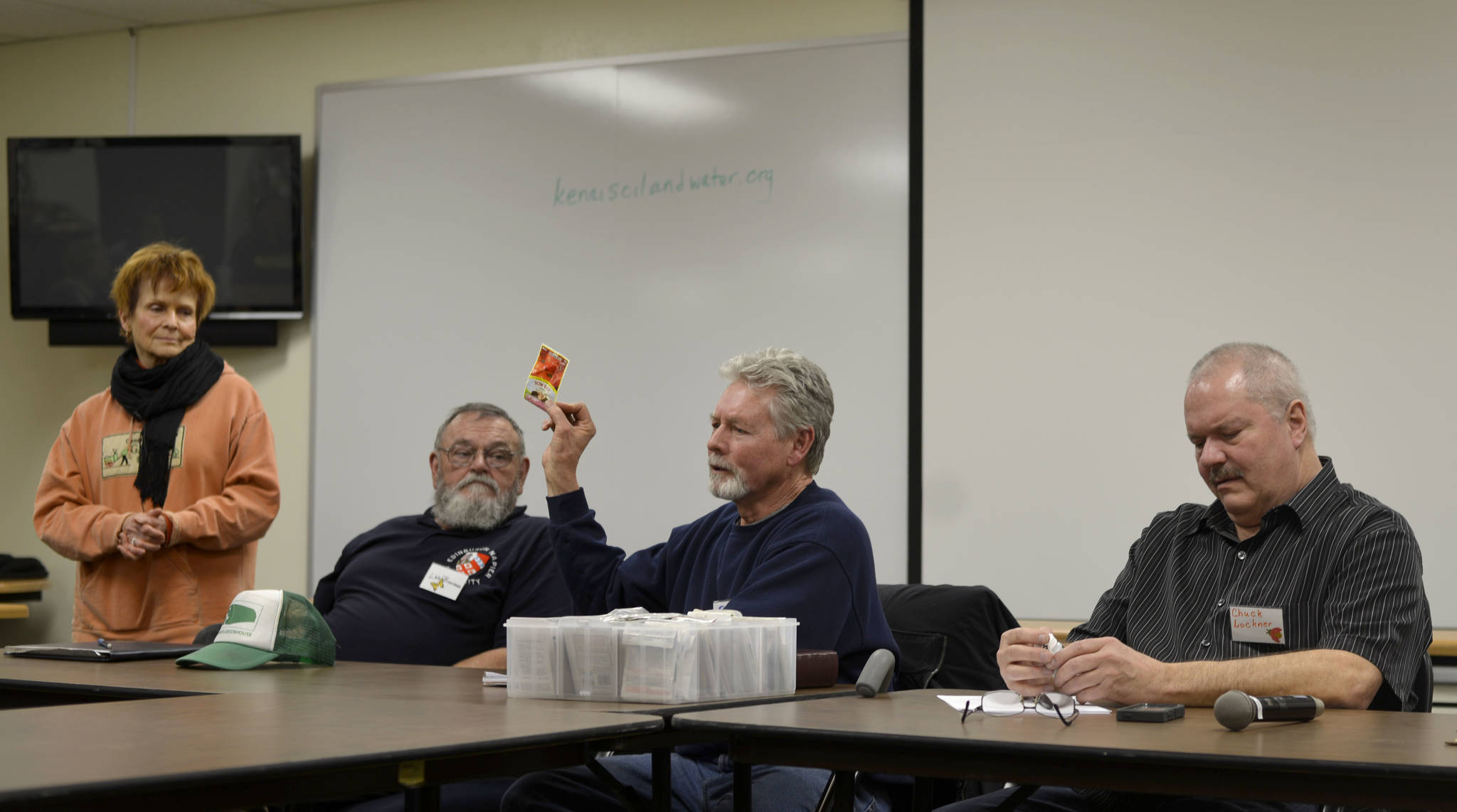The sights, sounds and temperatures of spring may still be at least a few weeks away, but for those dreaming of freshly sprouted, green plants it’s time to break out the seed packets and start growing indoors.
With over 100 years in collective experience gardening on the Kenai Peninsula, Chuck Lockner, Dennis Pindler, Lee Bowman and Don Adams shared their expertise at the Central Peninsula Garden Club’s “Soil, Seeds and Starts” panel discussion Tuesday.
“They all do a number of things, from high tunnels to outdoor gardens, from potato patches to green houses — you name it,” said panel moderator Marion Nelson.
In Alaska, a majority of seeds need to be started inside well before the snow has melted in order to have plants ready for a spring growing season.
“Talking about schedule, and trying trying to tell people how to schedule plants is really a hard thing, because it’s so personal to where you are and what you do that it’s hard to get people the right information,” Bowman said. “As soon as you think you’ve got it figured out, the frost has different plans.”
Each seed has a different timing for when it should be started, but the panelists and the Central Peninsula Garden Club recommended following Jeff Lowenfels’ planting outline, published in Alaska Dispatch News. The Garden Club warns, though, that Lowenfels is based in Anchorage and because local temperatures may be cooler, seeds may be planted one week later than Lowenfels suggests.
According to Lowenfels’ timeline, March is the perfect time to start a wide array of vegetables and flowers indoors including leeks, celery, tomatoes, begonias, pansies, kale and parsley.
Panel members recommended to pre-sprout seeds before planting them indoors to ensure that the seeds will sprout and to avoid future headaches.
“It’s a frustrating thing to grow a whole row of corn, then wait two weeks to find that none of them are going to sprout,” Bowman said.
To avoid this, Bowman takes the seeds that he’s going to plant and wraps them in a wet paper towel. He keeps them in a plastic container so they stay moist and places the container in a warm place.
“In about two days you will see the little root sprout and you know that the seed is going to sprout. You have to be a little tender with it, because that is a fairly delicate part of the plant … but with a little finesse you can put the sprouts where you want them and get them to grow,” Bowman said.
Panelists also discussed the importance of good soil in starting seeds and having a successful garden.
“In the 20 years that I’ve gardened, I’ve had to make my own dirt out here. Every piece of ground that I’ve had in Alaska has been a lot of sand,” Lockner said.
Panelists recommended finding used coffee grounds, kitchen scraps, grass clippings, greens and spent grains from local breweries to build better soil.
“Dennis has used spent grain on his garden beds for a long time and they are just gorgeous looking,” Nelson said.
Panelists also recommended the use of perlite when making your own potting soil, which helps prevent soil compaction and promotes strong root development.
Once the seeds are planted in good soil, it’s important to ensure that they receive enough light, according to the panelists.
“Even though we’re sneaking up on the 12-hour days, most of the things that you’re going to plant now are going to require some additional lighting,” Bowman said. “And put them very close so the plants aren’t stretching to get to the light and so that you don’t have tall, spindly plants.”
Lights should be about 2 to 3 inches above the plants, according to Adams.
“I try to keep the light down low and then you get nice, strong flats,” he said. “I raise them as the plant grows before putting them in a bigger pot.”
After starting the seeds, it’s important to remember that each garden and season is different. It could be more than three months before the seeds are transplanted into the ground.
“There’s an old adage you can plant your plants outside when the leaves on the trees are as large as a squirrel’s ear,” Bowman said. “And since our squirrels up here have very, very tiny ears that doesn’t work.”
The Central Peninsula Garden Club will continue their preparations with a “Get Ready for Spring!” event on March 25 from 10 a.m. to 2 p.m. at the Kenai Visitors and Cultural Center. The next monthly program will be held on April 11 and cover “Uninvited Guests,” a presentation from Matt Bowser on what to expect from insects and small creatures.

